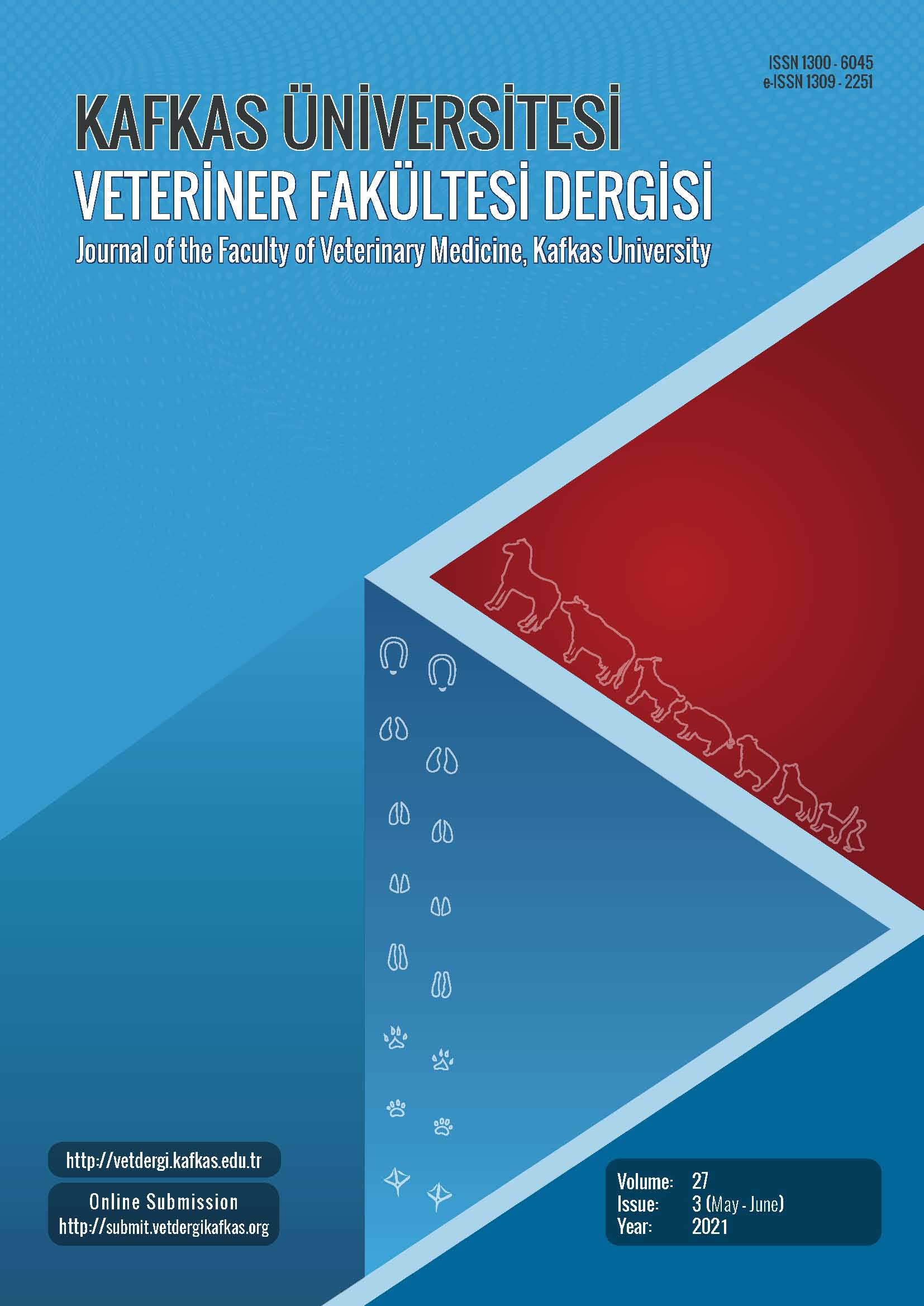
This journal is licensed under a Creative Commons Attribution-NonCommercial 4.0 International License
Kafkas Üniversitesi Veteriner Fakültesi Dergisi
2021 , Vol 27 , Issue 3
Does Umbelliferone Protect Primary Cortical Neuron Cells Against Glutamate Excitotoxicity
1Bilecik Seyh Edebali University, Vocational School, Food Processing Department, TR-11230 Bilecik - TURKEY2Pamukkale University, Faculty of Medicine, Department of Physiology, TR-20070 Denizli - TURKEY
3Ataturk University, Faculty of Pharmacy, Department of Pharmacognosy, TR-25240 Erzurum - TURKEY
4Ataturk University, Faculty of Medicine, Department of Physiology, TR-25240 Erzurum - TURKEY
5Yuzuncu Yıl University, Faculty of Pharmacy, Department of Pharmacy, TR-65090 Van - TURKEY
6Ataturk University, Faculty of Medicine, Department of Medical Pharmacy, TR-25240 Erzurum - TURKEY DOI : 10.9775/kvfd.2021.25439 Glutamate is the major excitatory neurotransmitter in the central nervous system. Excessive glutamate is known to cause excitotoxicity. Umbelliferone is a coumarin derivative compound and has anti-oxidant, anti-infl ammatory, and neuroprotective eff ects. Also, umbelliferone can show neuroprotective eff ect by crossing the blood-brain barrier. In our study, it was aimed to investigate the neuroprotection of umbelliferone on primary cortical neuron (PCN) culture. Umbelliferone was isolated from the roots of Ferulago cassia dichloromethane sub-extract. The cerebral cortex of newborn Sprague Dawley rats was used to obtain PCNs. To stimulate glutamate excitotoxicity, cells were exposed to 6x10-5M glutamate. Then diff erent concentrations (10-1000 μM) of umbelliferone were added into the medium and allowed to incubate for 24 and 72 h. MTT assay was used to measure cell viability. Total Antioxidant Status (TAS) and Total Oxidant Status (TOS) analyzes were used to evaluate reactive oxygen species. MTT results showed that cell viability was decreased with glutamate application. 25-250 μM umbelliferone had a significant protective eff ect against glutamate excitotoxicity at 72 hours (P<0.05). Consistent with MTT results, TAS analysis results showed 50-250 μM umbelliferone increase the level of antioxidants in cells, which can help protect neurons against glutamate-induced excitotoxicity. In this study, umbelliferone showed a neuroprotective eff ect in PCN against glutamate excitotoxicity. These results suggest that umbelliferone may be used as therapeutic agent against glutamate excitotoxicity. Keywords : Glutamate, Ferulago, Primary cortical neuron culture, Umbelliferone










